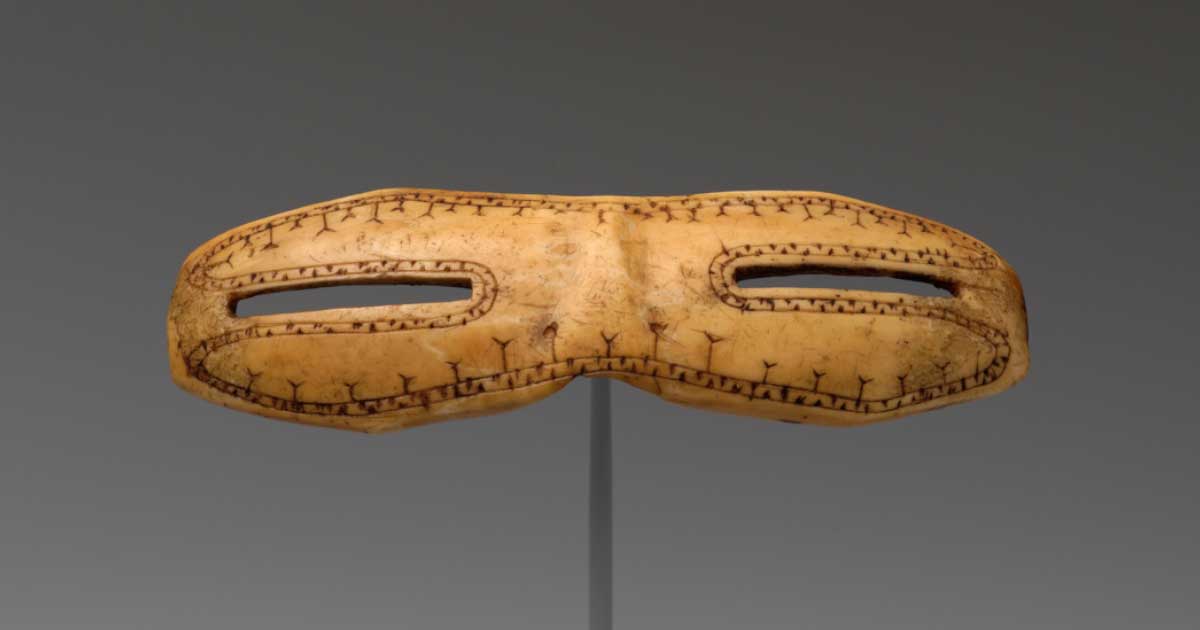Snow Goggles Are Masterpiece of Inuit Indigenous Innovation
While most readers would never expect to see the terms “snow goggles” and “ancient history” in the same sentence, snow goggles are actually nothing new. Despite being a modern-day necessity in snow-covered regions, snow goggles were first invented as an indispensable survival tool by the ancestors of the Inuit in the Arctic North of ancient history. And they were pretty snazzy too!
If you’re wondering why the proto-Inuit would have needed such a stylish accessory, think again. These ancient snow goggles, dating back as far as 2,000 years, were first developed as an indigenous answer to a painful condition known as snow blindness. The roots of snow goggles have been traced back to the Old Bering Sea culture that existed on both sides of the Bering Strait. The tradition of using snow goggles was then passed down to the present-day Eskimos.
Caused by prolonged or excess exposure to ultraviolet light reflecting off the snow or ice, as well as the freezing wind, the condition is in essence a kind of sunburn of the cornea which can be prevented by using eye protection. This was particularly important in a region which experiences 24-hour sunlight during the summer, or as much as six months of daylight at the North Pole.
Snow goggles, a.k.a. ikgaak or nigaugek, were historically used by the precursors of the Inuit and the Yupik peoples. Made of materials found in the surrounding environment, such as antlers, walrus ivory, whalebone, bark or even driftwood, these snow goggles are examples of primitive sustainable engineering.

Photograph by Archibald Fleming of an Inuit man wearing wooden snow goggles with slits for eye protection. (Public domain)
The indigenous peoples of what is now Alaska would carve these materials to fit their faces perfectly, and then add slits to allow for limited visibility. This would help protect their eyes from the glare caused by the snow-covered surroundings. In some cases, the snow goggles were painted dark black to reduce the blinding glare even more.
Individual snow goggles were decorated with unique markings, patterns and designs, which resulted in one of a kind eyewear. They were then attached to the face using organic cords, made out of caribou sinew for example. Snow goggles varied according to climate, geography and access to raw materials. In the Aleutian Islands, the Aleuts used visors instead. A pair of snow goggles discovered on St. Lawrence Island and used by the Siberian Yupik people had slits resembling Venetian blinds.
Surprisingly, these ancient snow goggles functioned much like corrective eyewear, hundreds of years before eyeglasses were first invented. Much the same as a pinhole camera, the slit has also been found to improve eyesight. Could it be that the proto-Inuit were also intentionally enhancing their ability to see?
Top image: Walrus ivory snow goggles, created by the proto-Inuit Thule culture of Alaska, dating back to about 800 to 1200 AD. Source: Public domain



















